KHEN SHISH
☰
☰
x
- ← LEA NIKEL AND KHEN SHISH: IN THE BLACK DISTANCE
- Naomi Aviv
- 2010
The joy of painting, the physical pleasure of making it, the mental freedom and the bodily liberation… And on the other hand – the compulsion to turn up each morning in front of the empty canvas or paper and start the ritual of knocking on the white walls; that ritual of wooing the gate of the naked painting until it submits to the first brush stroke, which expands and collects into a stain as smudged and as borderless as if it, the stain, were only the form’s ghost; perhaps the painting will submit to the flight of a line that takes off, carves, scratches or falls to pieces in the space of the picture, as if trying to write in some idiosyncratic language. This act of painting generates a variety of choreographies and gestures, including hurling, pulling, spraying, dripping, taking the canvas down from the wall and placing it on the floor, bending on all fours and smearing paint with the fingers and so on. The painting evolves through an energetic expressiveness detached from any reality. Shapes, layers, covering, scraping, intersecting lines, tensions and balances – and here they are, Lea Nikel, and Khen Shish, at the heart of an adventure. With no plan, no preparatory drawings, no representational intentions, no figurative vision and no indication of indecisions: open to surprises, they play the painting, embellishing the melody with noises, crashes, rhythmic repetitions, spontaneous deviations, pauses, breaths, meditation and improvisation. The process is the subject of art itself and the painting is a miracle, both would conclude, without cynicism or irony.
Lea Nikel: “Sometimes, when you put something in the picture which doesn’t belong there, which is illegal, which is absurd, that’s what makes the picture”. (1)
Khen Shish: “In order to create disorder in the painting you have to disrupt, interrupt, or maim. Tear, perforate. As with a simple walk on the pavement in daily life, it’s the same with painting. There’s room for injuries. The dilemma is whether to ‘dress’ it or let it ‘form a scab’”. (2)
The performative aspect of making painting of this kind, when it is the body that leads the process, has been defined as “event” (Harold Rosenberg, 1952) and therefore the style has been entitled “action painting”. (3) Lea Nikel and Khen Shish practice various types of action painting, although their works do not adhere to all the formal definitions of such painting as formulated by Clement Greenberg.
If Lea Nikel had not passed away in 2005, she would have been 92 today. Khen Shish has just recently turned forty. 52 years separate these two artists, who had never met – but both display a temperament free of age or fashion, a freshness and a “mischievous grace” (words used by Michael Sgan-Cohen to describe Nikel); the same element of expressionism and romanticism and the same penchant for the theatrical; the same fleet-footedness and ease of movement between cities, countries, flats and experiences: always to follow their painting and its generous gestures in the changing landscapes; always to follow beauty in its simple and primal senses; always out of a feeling of internal abundance, not related to life’s conditions, only to the essence of what it’s all about.
Lea Nikel, as Adam Baruch would have surely said, is a done and dusted entity. “She is an artist of faith and trust. Of touching with the hand, not touching through words. She is a special and excellent representative of painting as redemption, as the construction of a new order within chaos”. (4) Even before she had retrospectives at major Israeli museums (The Israel Museum, 1985; Tel Aviv Museum of Art, 1995) and received the Israel Prize for Art in 1995, she was described again and again as “the first lady of abstract Israeli painting”. When considering her own particular version of the abstract, people mentioned Moshe Kupferman, whose abstract was seen as leaner and more severe. As early as 1965, Yona Fischer counted her among the “Elite of Israeli Art”, describing her as “embodying the continuity of art in its most important manifestations since the first days of the ‘New Horizons’ movement”. (5) The interest in her work has fluctuated in line with changing trends and hegemonies (which left almost no mark on her) – but her status has remained strong due to her importance as a prominent modernist artist, and as an exemplary representative of an alternative, experimental, eccentric and daring culture, who has played a significant part in formulating the Israeli abstract. Nikel developed a distinctive and stubborn strain of universal painting, its principles influenced also by Beat poetry (Allen Ginsberg) and Jazz music. (6) “Natural”, dynamic painting, blessed with “such good lungs”. (7)
The Nikel strain of painting dared to go its own way, to renounce – as early as the beginning of the 1950s – the assets of lyrical abstraction, the figurative sorcery, the suffocating fetters of adhering to nature, to the model or to practices of painting from observation. Nikel took in Tachism (the French version of American Abstract Expressionism) and later the American Abstract itself in its incarnations as “Action Painting”, “Color Field Painting”, and “Gestural Painting”. She never stopped wandering and perfecting the handling ability and sensitivity of her language of color, the meters, composition and construction, having no difficulty in pleasing the eye, capturing hearts, and bestowing a sense of an endless summer on more and more walls in Israeli houses.
Likewise Khen Shish, a trans-avant-garde and neo-expressionist “soul painter”, has been steadily establishing herself as the queen of hearts of the contemporary Israeli scene. Both Nikel and Shish can be described as gestural artists, producing authentic inter-subjective painting, painted intuitively with a variety of means and reliant on the “remembering body”. Tapping. Fluttering. Enthusiasm. An internal wave putting its trust in the sub-consciousness of the painting, flooding the canvas with a series of automatic calligraphies. The presence of the private unconscious is totally real. The soul is registered in the body. The body dances the painting. In her youth in the 1930s, before she was exposed by Haim Gliksberg to the world of painting, Nikel believed her vocation was dancing, and in the first decade of her life even studied with Gertrude Kraus. And if Nikel painted like a body dances, Shish paints like a bird sings… But both have the same talent to grow beauty precisely from the points of internal collision with abstract or real corms of difficulty, anguish or distress… Stop! “Don’t touch the beautiful”, recommends our mental defense mechanism according to Jacques Lacan, (8) who followed Freud (also) by appealing to art as an ideal platform for the study of the psyche. And like Freud, he too believed that a sudden appearance of beauty in art is like turning to describe something as beautiful in the midst of a therapeutic session. It is precisely the appearance of a description of beauty or of a distinctly aesthetic moment that hides a forbidden desire, some difficulty or sense of being threatened that the subject is conditioned to bypass or disguise. In other words, for the investigative observer, beauty may be a warning sign. The beautiful often appears when the mental censor decides that “here it is better to repress” and insert a substitute.
Therefore, as viewers, when we come across a manifestly beautiful image, we should perhaps stop and consider that art as a whole is produced under the prohibition to express an unacceptable desire. Even the edict formulated in the Second Commandment assumes that the psyche desires to imagine what it is forbidden from imagining. And yet Nikel and Shish, both possessing a tempestuous and almost uninhibited soul, offer us numerous references to beauty, real or abstract. The difficulty hiding under this abundance of beauty is impossible to know; at the very least we can raise our awareness of it as we hold on to joyous and glimmering surfaces of color or to images of a butterfly, a grasshopper, a flower, a boat or a bird.
When Lea Nikel covers the entire canvas with opaque black, from which, right in the center, emerges a red flower – the thought of elemental beauty may certainly go through the observer’s mind. And when Khen Shish scribbles a long line that grows a petal – the long or tall flower may trigger in us the aesthetic experience of a simple, albeit somewhat melancholy beauty. In the next painting, this line and the circle at its end are reversed: now we have a simple bare light bulb, dangling from a long wire. The long line ending in an ellipse – which initially looked like a single flower touchingly hanging from a bare sky, then emerged as a simple, dangling bulb – continues its metamorphosis and changes into a gallows, both concrete and symbolic. And again the same flower is perceived as a line that generates a thorny and elliptical black stain, as a cocoon-like image that conceals a dark, hard-to-accept secret, as a repressed preoccupation with the death of a loved one or the death of love, as a substitute-image for the death-wish that emerges precisely in the most vivid moment, as “painting: the task of mourning” (9). Yet beauty, like death, has no real meaning. They are both beyond our grasp. To one of these “bulb” drawings, one of many, Shish attached the beautiful title “Rotten Bulb”. Henceforth we shall see all her bulbs-tubers-flower-hanging-rope scrawls as “rotten (beautiful) bulbs”. This opens a whole new spectrum of reading possibilities for that bulb: there it is as Julia Kristeva’s oppressive “black sun”, or maybe Georges Bataille’s “eye”, or Freud’s “hole”, seeking to be penetrated…
In this vein we shall look at a large painting by Lea Nikel from 2003 in acrylic on canvas, in which, out of the “dirty” turquoise, gapes a great canyon of dark “light” that looks like skin tissue or a piece of black land. The turquoise is as sensual and shiny as a sea, out of which rises or gapes the black spot, as large as an island. An island of discontent? A mysterious and distressing Bermuda triangle? Genitalia? The screaming signpost of some forbidden urge? The “task of mourning” again, needed when one is unable to come to terms with the presence of death in life? There are plenty of possibilities. “I don’t know how to speak, so that’s why I paint”, said Nikel more than once or twice, thus covering or blocking another desire, the viewer’s desire to understand what cannot be understood.
Still, to exhibit two artists from two different generations, who operate on different emotional registers, one next to the other – it’s not an obvious choice, however challenging. To emphasize the connection between two bodies of work born under distant circumstances of life and time, works have been selected in which the central motif is the color black: the same black that represents first of all primeval chaos and absolute emptiness; the same authoritative and imperious black that may function in the picture as a kind of landlord, imposing order and balance, or enhancing and increasing the colorfulness of any color wishing to border it or be around it; the same black of which Georgia O’Keeffe said that it was convenient for the painter to hide under its wings; the same black of which Pierre Auguste Renoir said, at the beginning of his career, “The shadow is not black. It always has a color. Nature knows only colors. […] White and black are not colors” – before changing his mind and declaring: “I’ve been forty years discovering that the queen of all colors is black”; (10) the same black of which Matisse said that if you are a colorist, you will make your presence known even in a simple charcoal drawing. (11)
“When her [Nikel’s] colorism is praised, she says she hates colors and immediately mentions her notebooks of drawings or her works in black and white, as the works she actually likes most”, (12) wrote Michael Sgan-Cohen about Nikel in the catalogue of her retrospective he curated at the Tel Aviv Museum of Art in 1995. At the beginning of the essay Sgan-Cohen admits that for him Nikel has been associated more than anything else with the color orange – but further on he dwells on the idea that in fact colors put the artist who is sensitive to color under siege. In Nikel’s words cited above he therefore sees “a provocation against ‘the celebration of colors’ and set phrases” associated with her paintings (to another of his questions on the same subject – what color do you like most? – Nikel replies no less provocatively: “dirty color”). The issue of color is summed up by Sgan-Cohen with a quote from an interview Nikel gave to Heda Boshes in the Haaretz newspaper: “No color is too bright and no color is dirty and no color is too pretty. You only need to put it in the right place. […] Actually that yellow color associated with the joy of life, I didn’t put it on because of a sense of joy. […] I dare to put on a color that other painters don’t dare to put on in case it would be crude, but in my work it looks ok”. (13)
This joint exhibition shows works by Nikel and by Shish together and apart, seeking to explore the degree of closeness or distance between two aesthetic doctrines and painterly values; the degree of closeness or distance between the ivory black, that functions as the full, ecstatic, Dionysian (as opposed to Apollonian in the senses of light, balance and harmony), far-from-obvious partner of the colorist Nikel – and the carbonic, furnace-y, elemental and romantic black of the almost-monochromatic Shish; between the modernist gesture that moves under conditions of flow and regimentation in Nikel’s work (“controlled abstraction”, as she preferred to describe her rhetoric of the abstract) – and Shish’s post-modernist gesture, moving among free assemblages of abstraction and representation, reduction and symbol, minimal-existential scratches and poetry. Shish, who received a conceptual education mixed with a slightly skeptical attitude towards the act of painting itself, has basically adopted the Israeli “want of matter”, augmenting it with simple, accessible materials such as spices, stickers, stamps, pieces of double-adhesive tape, gold leaf, photographs and pictures from the family album, newspapers and magazines. It is these random additions that “color” her art with social bite – but her unconscious and riotous painting gesture still echoes, among others, Aviva Uri, Raffi Lavie, Moshe Gershuni, Tsibi Geva. And Lea Nikel.
If Nikel had been with us today, it’s doubtful whether she could have identified with Shish’s painting, which, notwithstanding some similarities and a common vitality, has a different appearance from her own, if only due to the figurative motifs recurring in it as if spontaneously under a conceptual cloak – motifs and cloak which Nikel, faithful to the tenets of the abstract and the language of the painterly medium, clearly eschewed (despite the temptation to recognize in her work, here and there, a flower, a butterfly, [phallic?] heads, triangles or circles). (14)
On the subject of intergenerational acceptance, I’d like to cite here a story told by Françoise Gilot, (15) Picasso’s wife at the time, about one of hers and Picasso’s visits to see Matisse at the beginning of the 1950s, when Matisse was already ill: Matisse showed them some new catalogues he had received from his son Pierre, containing reproductions of paintings by Jackson Pollock and other American Abstract painters. “I have the impression that I’m incapable of judging painting like that”, said Matisse, “for the simple reason that one is always unable to judge fairly what follows one’s own work. One can judge what has happened before and what comes along at the same time. And even among those who follow, when a painter hasn’t completely forgotten me I understand him a little bit, even though he goes beyond me. But when he gets to the point where he no longer makes any reference to what for me is painting, I can no longer understand him. I can’t judge him either. It’s completely over my head”. Matisse, according to Gilot, went on to recall that when he was young he was very fond of Renoir’s painting. Towards the end of the First World War he found himself in the South of France and decided to call on Renoir, who was by that time very old, and show him some of his paintings, to find out what he thought of them. “He looked them over with a somewhat disapproving air”, Matisse recalled. “Finally he said, ‘Well, I must speak the truth. I must say I don’t like what you do, for various reasons. I should almost like to say that you’re not really a good painter or even that you’re a very bad painter. But there’s one thing that prevents me from telling you that. When you put on some black, it stays right there on the canvas. All my life I have been saying that one can’t any longer use black without making a hole in the canvas. It’s not a color. Now, you speak the language of color. Yet you put on black and you make it stick.”
Picasso, perhaps for these reasons, strongly objected “to all that sort of stuff” – namely the Abstract Expressionists. These painters were for the most part post-Cubists (and inspired by them, so was Lea Nikel), and were very influenced by Picasso – but at the same time they advocated a spontaneous idiom and automatic brush strokes in the vein of Surrealism, granting the right of interpretation to the viewer. Although Picasso accepted Freud’s approach that art’s source of power was in revealing the unconscious and serving as an arena for the embodiment (and taking the sting out of) urges and for a certain compensation for discontent – at the same time he wasn’t keen on releasing the interpretation of his works from his grasp. In this spirit he mocked the poet Paul Valéry for saying that a good poem must not drown in its own meaning. According to Picasso – Gilot continues – Valéry used to write half the poem and leave it for the readers to write the other half...
“I think it is a mistake” – Picasso went on slating the American Abstract (perceived in Paris as a barbaric trend) – “to let oneself go completely and lose oneself in the gesture. Giving oneself up entirely to the action of painting – there’s something in that which displeases me enormously. It’s not at all that I hold to a rational conception of painting, […] but in any case the unconscious is so strong in us that it expresses itself in one fashion or another. Those are the roots through which the whole human substratum communicates itself from one being to another. Whatever we may do, it expresses itself in spite of us. So why should we deliberately hand ourselves over to it?” (16) Nevertheless, another of Picasso’s saying, “I don’t try to express nature; rather, to work like nature”, (17) resonates with Jackson Pollock’s mythical statement, “I am nature”. (18)
As for the right of interpretation, Nikel was – in diametrical opposition to Shish – truly fanatical in her refusal to supply any interpretation or any shred of a key for reading her work. “Anyone can understand what they want”, she would mutter as if obeying Kant’s claim that it was not for the artist to speak about their art, or perhaps wishing to protect the magic of things not sealed with a final meaning. For these reasons she refrained from giving telltale names to her paintings – only rarely, when here and there she painted an (abstract) portrait, she entitled it with the name of the sitter (for example Portrait of Ariela Shavid); and only when a recognizable formal motif insisted on appearing in her painting like a slip of the pen, under the prohibition of making images, she gave it its name (for example Black Butterfly), and by doing so seemed to admit the reality of the forbidden – for its very absence only highlights it more; furthermore: the disciplinary restriction she imposed on herself radiates the libidinal pleasure supplied by the substitute. Nikel left behind (lyrical) abstraction from observation, instead carving her artistic statement, extracting, hurling, drawing and scrawling it from the stem of the I and its temperament.
Lea Nikel arrived in Paris in 1950, in the post-war period that gave rise to Existentialism, the Theater of the Absurd, Jazz, turtlenecks and black trousers. In photographs from the period she looks like a Left Bank Parisian. In 1952 she painted a still life with a sculpture, still under the influence of Picasso. In the painting’s upper left side there is a kind of orange rectangle territorially fenced in by a black line. Below, on the right, that orange “window”, shining like the sun, is balanced with a black geometric spot that seems to embody the absence of light. Can Nikel’s black be merely the alter-ego of the orange she has been so identified with?
In Khen Shish’s work black is a default choice, a given. Like using a pen for writing. Through the years, black has come to be identified with her painting, sometimes turning into dim pink underlying spontaneous images in black. Even when she recently started using deep, dark green, blue or purple, they have been seen as an extension of the black family – engendering also her wide use of gold, which often replaces the surface’s white. “I get up at five in the morning, wash the floor, drink coffee, put on some black and something that I haven’t expected starts to emerge”, she said. “When the studio is in the house, you’re always in the experience of painting. I continue what has emerged in the direction of some figurative image. What image – that depends on the period. Now I’m coming up with kinds of eagles. Before it was monsters-female-spiders, which I entitled mademoiselles”. Even in the middle of the night Shish feels a strong need to wake up and go and become involved with the internal landscape picture transferred to the canvas in the light of day. Like Nikel, she too feels that each gesture should turn into a personal burden.
Shish turned to drawing and painting in 2000. Since abandoning the sculptural installations she had been occupied with since 1994, while still a student at the Oranim Seminary, and with them the dialogues she had developed between shower stalls and tubs, flowing water and a wall decorated with feathers, wooden boards smeared with glue and foodstuff such as spices, sesame or gold powder – her hand has germinated only eyes and hearts: eyes haunting and haunted, curling from smoke-coils or following a thread like a necklace; and hearts: lying, standing, broken, burned. The eyes, as already mentioned, have developed into either a boat (with the pupil imagined as a drain hole in the bottom), a leaf or a feather. The movement scribbling the eye usually begins from the outside, proceeding in one continuous line to the pupil, the black focus. “We’ve come to drive away the darkness”, Shish jokingly quotes the Hanukkah song, confessing her anxiety of losing her eyesight.
At the beginning of the 2000s, when Shish discovered the joy of drawing and painting, she put up a video camera and recorded herself performing the simple and sharp ritual of selecting between what she saw as the good line and the bad: she sat in front of a pile of papers, from which she drew one sheet of paper after another, using graphite to scrawl-scratch a lonely line on each, then placing it on a heap piling up to her right or her left. This cutting ceremony doubtlessly attests to her understanding of the line as an essence that can fill up a world. This line, which has replaced the wooden boards covered with spices and has become her spine (whereas the stain represents the entire body), generated intersecting lines that produce rows of Xs, the flower stalks, the gallows, or branches for a bird to put down anchor on. The flower-like scrawl at the end of the line is actually an arrow. The tallest of Shish’s lines-flowers-arrows rises to the height of two meters. “If you want you can look up. The flower is a fantasy. The only thing the viewer is left with is a line in the world. That’s what there is, and the line is propping up the round world. The inflorescence, which is both a tear and finally also a crown and claws and a bird, is a result of the line and is also much more problematic. My flowers started growing from a simple, transparent container-vase. The containers – like frames within the area of the canvas or the paper, a frame within a frame; it’s like putting the sea inside a pool. The frame is actually a continuation of the line. A frame is four lines turning like arrows in four directions” – says Shish, suddenly adding: “And look after yourself!”, as if hinting at the importance of the inner frame. Shish tends to place the heavy mass of paint at the top, “although the sky in my work can turn into the earth, and vice versa”.
An integral frame which delimits-supports the painting within the boundaries of the canvas or the paper, as if “to keep things orderly” or for fear that the painting would not stand up without it, features also in Nikel’s wild works – as does the feeling that any painting can be turned on its head without the picture collapsing. The liberation from the shackles of the canon may originate in the Impressionist impulse – but the performative idiom, that paved the way to Performance and Body Art, sprouted in the American Abstract. When she arrived in Paris, the post-Cubist Paris had started to lose its status as an international center of art in favor of New York – but Nikel, who arrived there penniless, succeeded in deriving great happiness from her stay in Paris: stylistic crystallization through direct contact with up-to-date artistic trends, with masterpieces and with major painters from around the world, including the painters of the somber Jewish Paris School; and marriage to Sam Leiman, who consecrated her painting practice and made it his aim to support her sovereignty as an artist “who gets up every morning to go to work like a laborer”. In 1953 she was still influenced by Cubism, painting with rich oil paint birds or a solitary pigeon in a black cage (grids have always featured in her painting). Black, sometimes embodying the border or the grille, has served Nikel well also for building surfaces and deploying territories. It was a small window in her tiny studio, looking out on a Parisian landscape of houses, that gave rise to her new interest in hints of shapes, in a geometrical arrangement, in flatness, in a framework, in abstract composition. At that stage her painting surface started to emerge as an arena for action painting, and in 1954 she decided to abandon painting from direct observation and turn to the abstract.
In the background at the time everyone was talking about the tension between color and form, and the budding trends of the second wave of the abstract: Art Informel, Art Brut, Matierism, Concrete Art. Nikel felt especially close to Parisian trends that echoed what was happening in New York at that time, and to artists such as Hans Hartung, Jean Fautrier, Georges Mathieu, Serge Poliakoff, Pierre Soulages, Antoni Tapies, Jean Dubuffet, Henri Michaux, Wols and Camille Bryen, and the Americans Mark Tobey, Sam Francis, Jackson Pollock, Arshile Gorky, Hans Hofmann. She started spreading paint straight from the tube, in a calligraphic structure with “random” inscriptions and no more than hints of figuration (An insect? Butterfly wings? Simple triangles or circles? Eyes?). Her work from that period features bare canvas surfaces with concrete anchors (a line looking like a zipper or a scar) and here and there holes in a very dark background, with lots of black and “dirty” colors, with a constructivist rhythm and using letters, words, captions, in the body of the painting itself.
By the end of that decade she had already exhibited in Paris, Amsterdam and Tel Aviv, coming back to Israel in 1961 (together with Yigal Tumarkin) only to take part in a show curated by Yona Fischer at the Bezalel National Museum in Jerusalem, also exhibited at the Tel Aviv Museum at Dizengoff House. Then she settled in the town of Ashdod. In 1963 she went for the first time to New York, where she had up close encounters with works by Gorky, Hofmann, Mark Rothko and of course Pollock. In 1964 she represented Israel at the Venice Biennale, alongside Arie Aroch and Yigal Tumarkin. Tumarkin, by the way, was one of her best friends and admirers, along with Menashe Kadishman, Dani Karavan, Raffie Lavie and Yair Garbuz. In 1965 she moved to Safed, and after the Six Days War went to Rome, where she lived for about three years. The large living rooms allowed her to move to painting in large formats. In 1970 she returned to Tel Aviv, lived in Jaffa, exhibited (for the second time) at the Chemerinsky Art Gallery and received rave reviews. “A top exhibition” and “a trend of her own”, wrote about her Miriam Tal, (19) “Pure painting that doesn’t try to ingratiate itself (like the lyrical abstract)”, added Ran Shchori. (20) The acclaim was translated in 1973 into a solo museum show at the Helena Rubinstein Pavilion for Contemporary Art, in the introduction to whose catalogue Haim Gamzu wrote that Nikel’s painting was “like a never-ending fountainhead of colors”. (21)
In 1973, this time after the Yom Kippur War, she returned to New York. She and Sam stayed at the mythological Chelsea Hotel, in room 822, as she wrote on one of her paintings. In New York she discovered acrylic, celebrating it with extra enthusiasm. Her paintings from that period returned to featuring captions. In the painting Untitled from 1976, the writing on the canvas is done directly from the tubes of the new paint (acrylic), and accordingly: brown sea, green sea, black sea, blue. Sometimes the word “sea” is written in Latin letters. In an earlier painting painted in Chelsea, featuring an abstract image of a window within a window within a window, she scribbled the name Ziva eight times, in Latin letters and in a variety of colors. She dedicated the painting to the subject of her longing: Ziva Hanan, her only daughter. In 1981 she and her husband made their home in Moshav Kidron, near the home of her daughter and her three grandchildren, Mira, Yoav and Gil. Since her death in 2005, at the age of 87, her granddaughter Mira Avgar has been in charge, on behalf of Lea Nikel’s heirs, of managing the estate.
Khen Shish, a native of Safed, has spent quite a few years of lively activity in Rome and Berlin and had some fairly long stays in Paris. She exhibits frequently in galleries and museums in Israel and in Europe, and even in the United States, and nowadays she lives in Tel Aviv. Shish, who grew up in a traditional home and maintains a strong connection to religion, approaches painting with no prior preparation and with no framing fetters such as still life or a window onto the street that she wishes to represent – but in the midst of painting she doesn’t reject “the imaginary function as a condition for the emergence of the symbolic function”, (22) as Jacques Lacan said in reference to the Second Commandment’s prohibition of making idols. “I don’t make any sketches. I have no preconceived ideas. I have no ideology. I have no agenda. The preliminary not-knowing is absolute in my work”, she says. “The painting includes its own laboratory. It doesn’t ask me. My arms work by themselves, like a spider. Everything is drawn and erased, covered or visible. You come and draw a lot, and suddenly some gesture leads to the creation of the image or the work. Not to paint is like punishment. Only on Saturdays I don’t paint”.
What captures the attention in both Nikel and Shish is the formal, always abstract energy – juxtaposed with the viewer’s inevitable impulse to give meaning to the form. Historically speaking, this observation is also valid for abstract painting – and it is also valid for the more liberated painting than ever of the painters of the post-abstract or post-conceptual last decade. These painters, like Khen Shish, let themselves paint whatever they feel like: flat painting empty of characters, subjects or illusionary space – or painting that prefers to deal with representation, albeit a self-aware and often ironic representation (irony, not in Shish’s case). Either way, it is past divisions into genre categories and their ranking in an hierarchical scale, alongside declarations about the “death” of one medium or the other – that have breathed their last. Pictoriality is more alive today than ever, and the possibilities it posits only keep broadening.
Like a spider, Shish spins her works, giving all of them names, as if they were children she must not orphan. The act of giving a work its title is like an inertial continuation of the painting gesture. Each work has a name: the eyes and/or boats that turn with time into leaves and scales and feathers; the bulb dangling from a wire or turning into a tuber growing a stalk; the legs of the birds, vultures and/or eagles; the moths and/or spiders, the flowers and/or vases, the sails and/or smoking houses; the crowns and the spots, the smears, the blots and the marks of acrylic-stained fingers; the scribbled, energetic lines, carving into the canvas and the paper; the “scars” that look like a zipped-up line (a motif recognizable as a bird’s leg, as well as chains of eyes and cicatricial zipper lines, feature in Nikel’s work too, as well as triangles sometimes composing a crown and sometimes a sail or a ship).
And if it seems to Shish that an image of a solitary boat is not enough, she will not hesitate to scrawl under it an explicit caption saying:” I am a sinking boat”. To the drawing of a foundation-less house with curling smoke under a somber sky-stain she adds the caption “Bonfire Night I wish you burn amen” – and next to another scrawl of the same house-type, she will write “Welcome warm home”. According to her, she dedicates a considerable part of her time to collecting titles for her paintings. Many of these titles have an independent status as an effect, an additional voice seeking to be part of the polyphonic work rather than to interpret the painting, seal or place it – like the caption “With you even the flowers cry”. Thus she had, early on in her career, captions like: “Alone” (as in the name of Zohar Argov’s song), “Space”, “Leopardess Honey”, “King”, “King Owl”, “King Eagle”, “Actually Nice” (referring to Golda Meir), “Strike”, “Here live happily Joseph and Khen” (referring to Joseph Beuys, on reproductions from whose book of drawings she created her own series of drawings, merging into his), “Queen Black”. When asked whom she is referring to in the recurring caption “King” – since the pop world has never stopped crowning kings and queens – Shish gives each enquirer a different answer. In the past she used to say that the “King” was Zohar Argov, immediately bringing to mind Jean-Michel Basquiat’s wonderful graffiti paintings featuring the crown, feathers and bird motifs. In Basquiat’s work the king is actually “Bird”, that is, Charlie Parker.
Shish draws most of her poetic, often funny captions from books that she reads. A while ago she sent me a huge “anthology” of captions she has recently created. Reading it brings to mind Surrealist poetry of the cadavre exquis kind, written around a table with each of the participants-players adding a line without seeing what has been written before. Here’s a selection of these captions, organized offhandedly as poetry verses. Some of them, by the way, are already being used by the paper leopardess.
THE PAINTER’S LONELINESS
I used to get up at five in the morning
Only to scatter the vanity of tears
There isn’t an hour in which she doesn’t cry with loneliness
HUMILITY
They don’t see
In the land of refinement it rains as well
We drank a glass of water
THE LINE THAT CAPTURES LIFE IN ONE MOMENT
An extraordinary butterfly collection
These objects keep secrets
I wanted to go to Alaska and freeze in the cold
THE WEAVER WEAVED THE SUNSET CLOUDS
Black wooden houses, calligraphy is unforgiving
Edvard Munch!
On that ship during one whole day
I’m just talking to my bird
THE MEETING OF THE FEATHERED HEADS
How shall we describe the cold
Looking for a beautiful tree
That mountain
Was wonderful
Many thanks and grace
In the last year or two Shish’s paintings have often featured the image of an eagle or a vulture. According to her she never intended to paint the king of the birds or the king of kings – the Lord: they simply turn up. “Maybe it’s got something to do with my childhood in Safed and playing in Wadi Amud. I remember quite a feral wildlife and lots of birds and birds of prey” – she volunteers a biographical clue. This combination of a vulture or an eagle (she’s not sure either) with a laconic childhood memory brings to mind a childhood memory in one of Leonardo Da Vinci’s notebooks that drew Freud’s attention, namely: “I recall as one of my very earliest memories that while I was in my cradle a vulture came down to me, and opened my mouth with its tail, and struck me many times with its tail against my lips”. (23) Freud, greatly intrigued by this memory-fantasy, identified the bird of prey (whose name he translated, some say mistakenly, into “vulture”, whereas Leonardo definitely meant a kite) with Leonardo’s mother, given here a phallic role. In Freud’s psychoanalytic interpretation, Leonardo – who grew up without a father – wishes to be forever fed by the maternal breast. The imaginary picture of the baby lying in his benign, smiling mother’s lap led Freud to suggest in this fascinating essay an interesting solution to the enigma of the Mona Lisa’s smile.
“My palette is mostly black because it’s the most beautiful color in the world. All the lights of the universe are woven into black. Black and I are one,” says Shish, who called the series of installations she showed in 1998 at the Artists House in Jerusalem, even before she started painting and attaching herself to black, Part Time Witch. Her fundamental affiliation with the color brings to mind a famous saying by Paul Klee, a painter who was especially close to Lea Nikel’s heart: “Color and I are one; I am a painter”.
Lea Nikel quoted in Idith Zertal, “Lea Nikel: Blessed you are for making me a painter”, Davar, 22.1.1965 [in Hebrew].
Art historians today feel that the emphasis on “action” has somewhat over-dominated the appreciation of Abstract Expressionism, eclipsing its other aspects, such as control versus chance. Therefore they reiterate its main sources, from Kandinsky’s poetic abstraction, through the Dadaists’ use of chance, to the Surrealists’ reliance on Freudian theory and their insistence on the centrality of the sexual urges (the libido) and the authenticity of the painting I, which find their expression through the “action”. See Irving Sandler, Abstract Expressionism and the American Experience: A Reevaluation (Manchester, VT: Hudson Hills Press, 2009).
Adam Baruch, “Details concerning the private, and principles concerning the theoretical”, cat. Lea Nikel: Retrospective, ed. Michael Sgan-Cohen (Tel Aviv Museum of Art, 1995), p. 43 [in Hebrew].
Yona Fischer, “Lea Nikel”, Lamerchav, 22.1.1965 [in Hebrew].
This was how Picasso – according to the painter Françoise Gilot, one of his wives – described the unique qualities with which Matisse, in his work, endows color; see Françoise Gilot and Carlton Lake, Life with Picasso (Penguin, 1966), pp. 262-263. Responding to Gilot’s question, Picasso went on to explain: “You’ve heard Matisse say, ‘You need to leave each color its zone of expansion.’ On that point I’m in complete agreement with him; that is, color is something which goes beyond itself. If you limit a color to the interior, let’s say, of some particular black curved line, you annihilate it, at least from the point of view of the language of color, because you destroy its power of extension. It’s not necessary for a color to have a determined form. It’s not even desirable. What is important is its power of expansion. When it reaches a point a little beyond itself, this force of expansion takes over and you get a kind of neutral zone to which the other color must come as it reaches the end of its course. At that moment you can say that color breathes. That’s the way Matisse paints and that’s why I said, ‘Matisse has such good lungs.’ As a rule, in my own work I don’t use that language. […] The fact that in one of my paintings there is a certain spot of red isn’t the essential part of the painting. The painting was done independently of that. You could take the red away and there would always be the painting; but with Matisse it is unthinkable that one could suppress a spot of red, however small, without having the painting immediately fall apart”.
The Seminar of Jacques Lacan: Book VII: The Ethics of Psychoanalysis, 1959-1960, ed. Jacques-Alain Miller (New York: W.W. Norton, 1997), p. 237.
Yve-Alain Bois, “Painting: the task of Mourning,” cat. Endgame (Boston: ICA & MIT Press, 1986), pp. 29-49.
Michael Sgan-Cohen, cat. Lea Nikel: Retrospective, op. cit. note 4, pp. 29-30 [in Hebrew].
Heda Boshes, “Lea Nikel’s Artistic Adventures”, Haaretz, 26.1.1965 [in Hebrew].
Miriam Tal, “Top Exhibition”, Lamerchav, 13.11.1970 [in Hebrew].
Ran Shchori, “Lea Nikel”, Haaretz, 6.11.1970 [in Hebrew].
Sigmund Freud, “Leonardo Da Vinci and a Memory of His Childhood”, The Complete Psychological Works of Sigmund Freud (The Standard Edition), (New York: W.W. Norton, 1990).
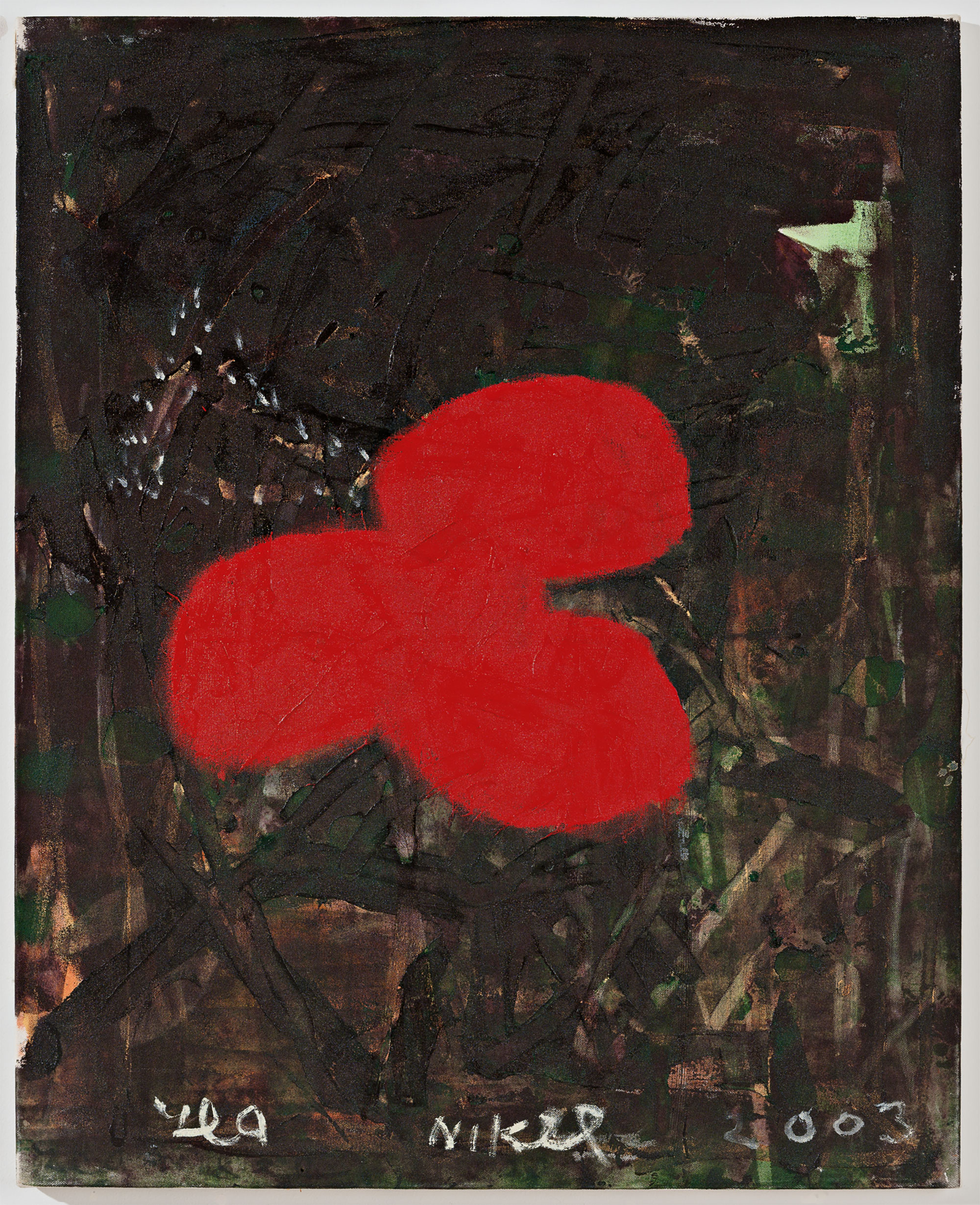
Lea Nikel, Untitled, 2003
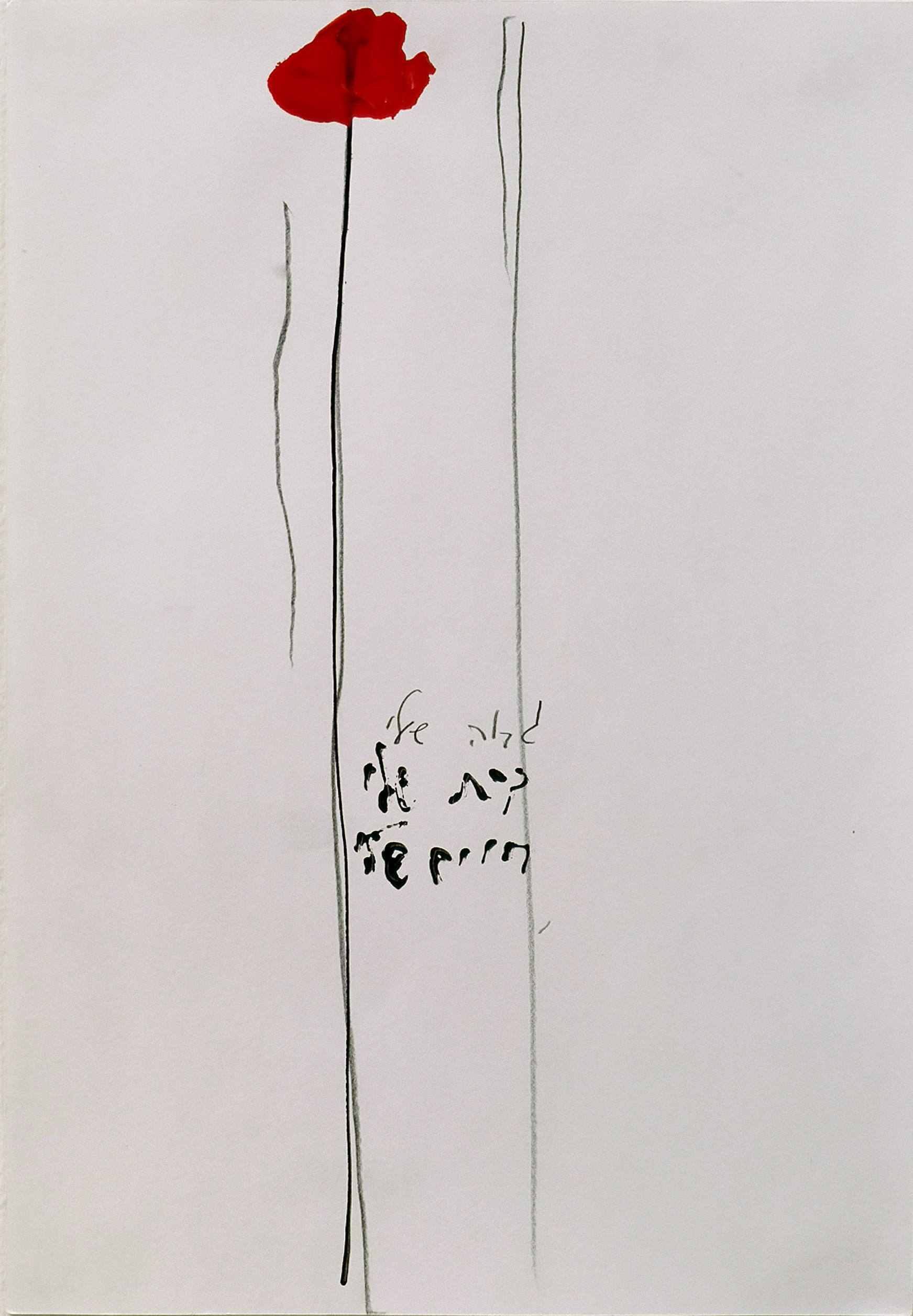
Mein Gro er Mein Heim Mein Leben, 2005, Acrylic and pencil on paper, 29.5x21
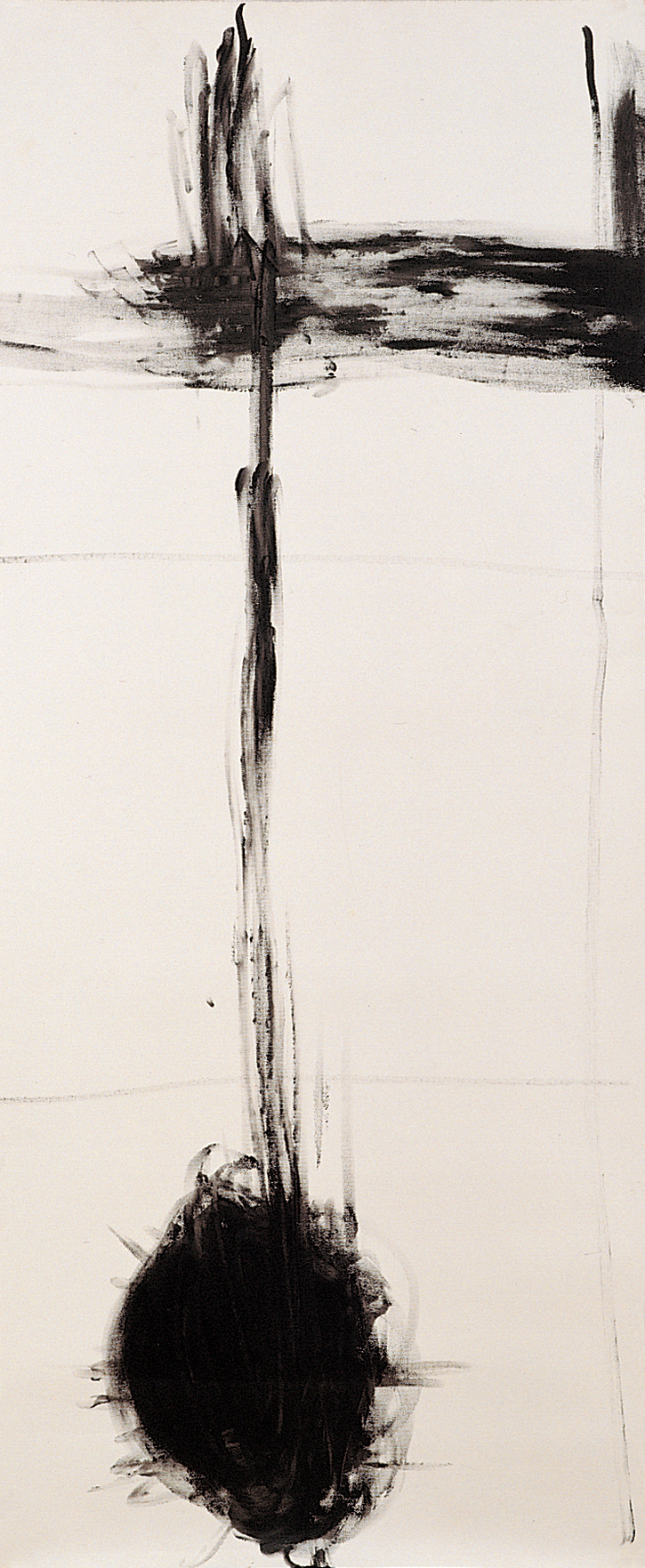
Rotten Bulb, 2005, acrylic on canvas, 60x67
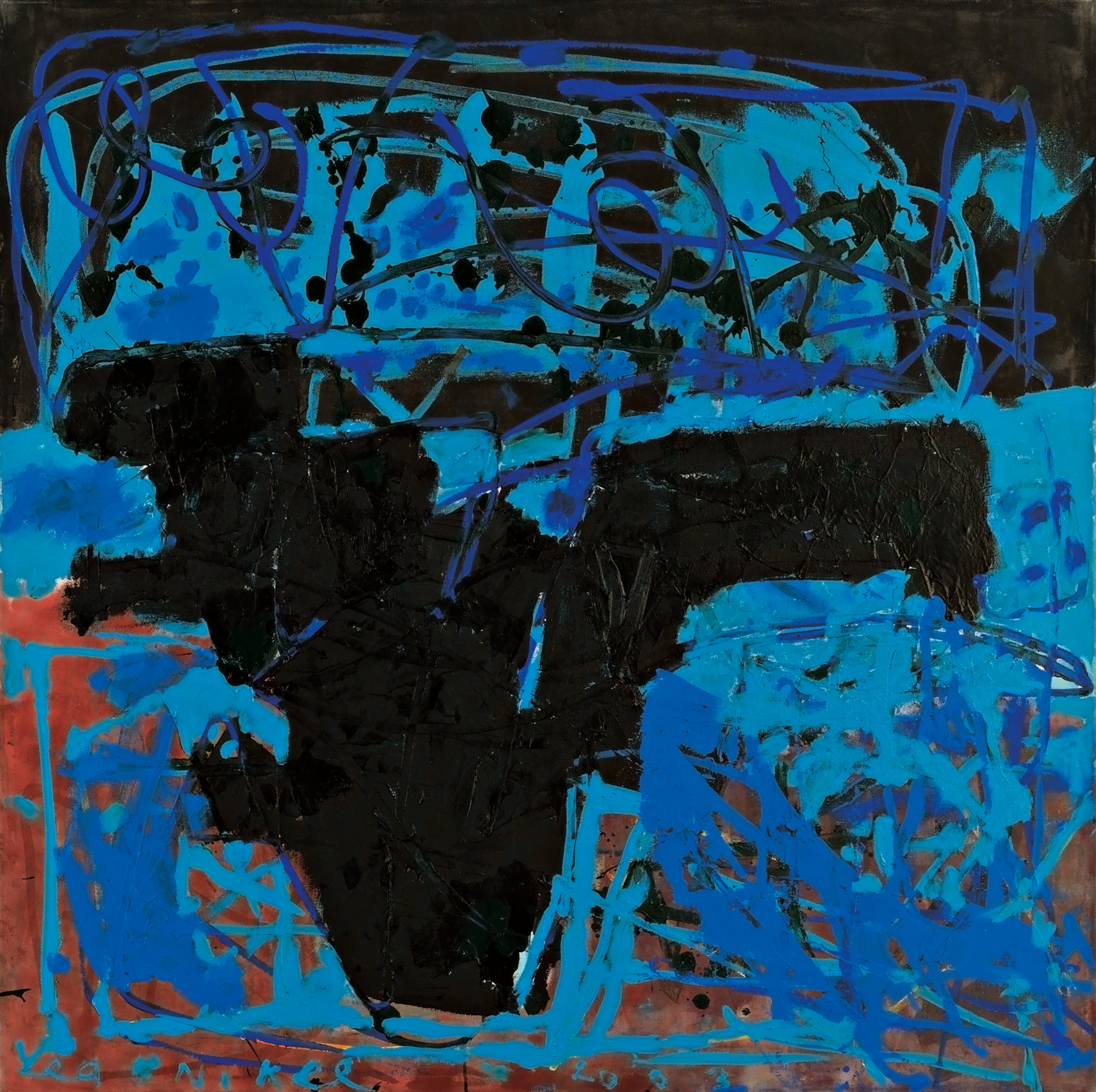
Lea Nikel, Untitled, 2003

Lea Nikel, Ariella, Chelsea Hotel, 1974
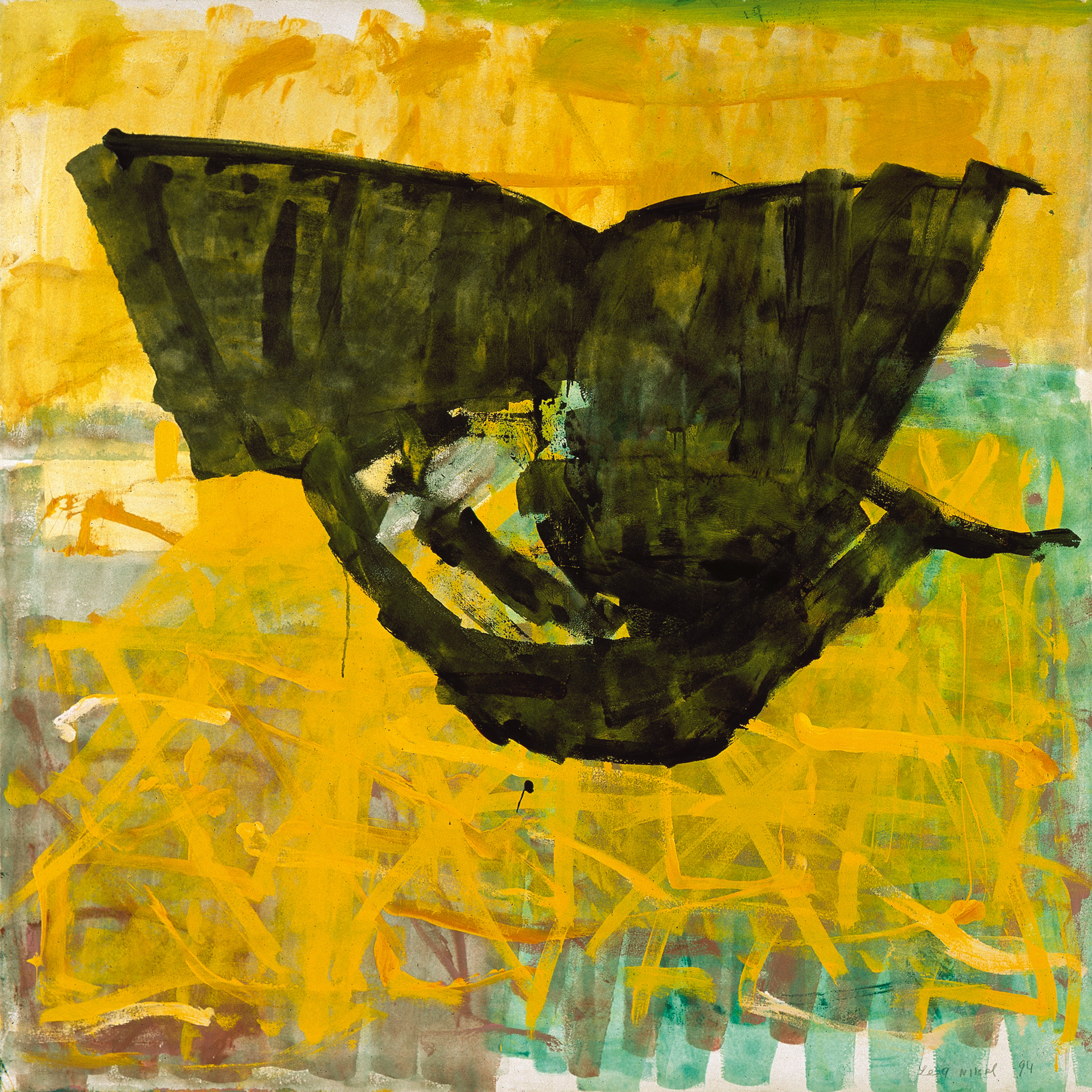
Lea Nikel, Black Butterfly, 1994
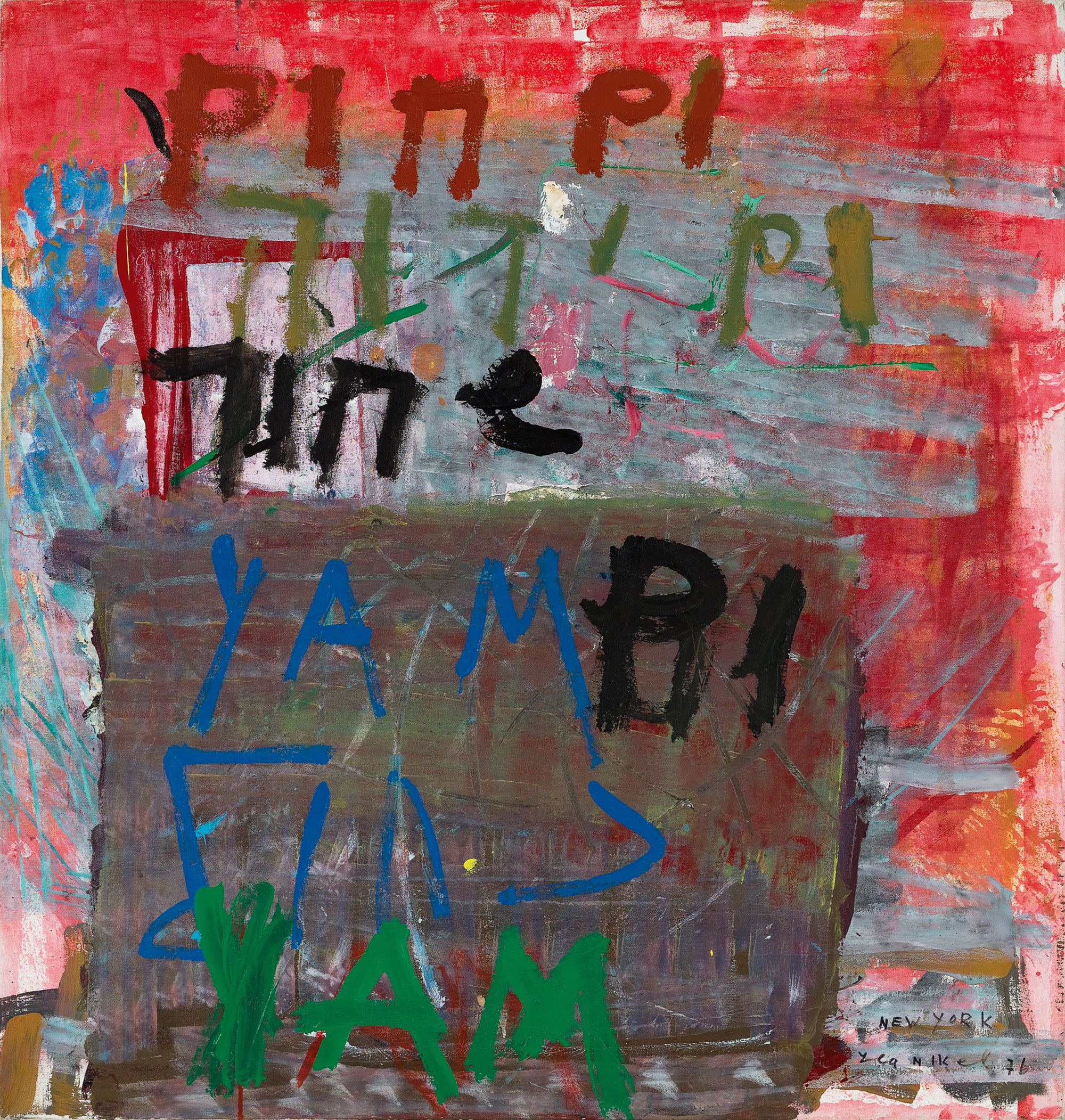
Lea Nikel, Untitled (Black Sea), 1976
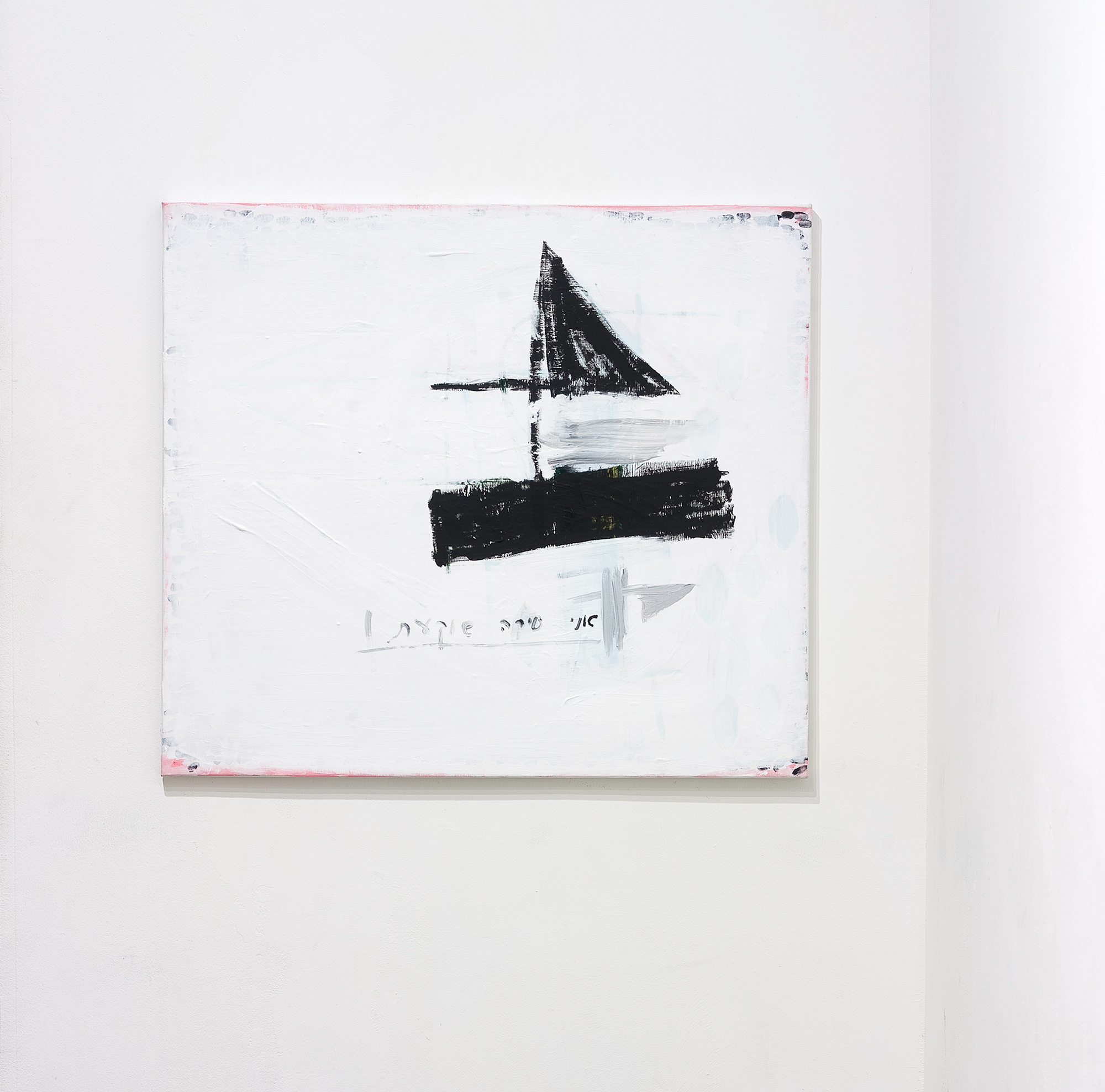
I am a Sinking Boat, 2006, acrylic on canvas, 103x91
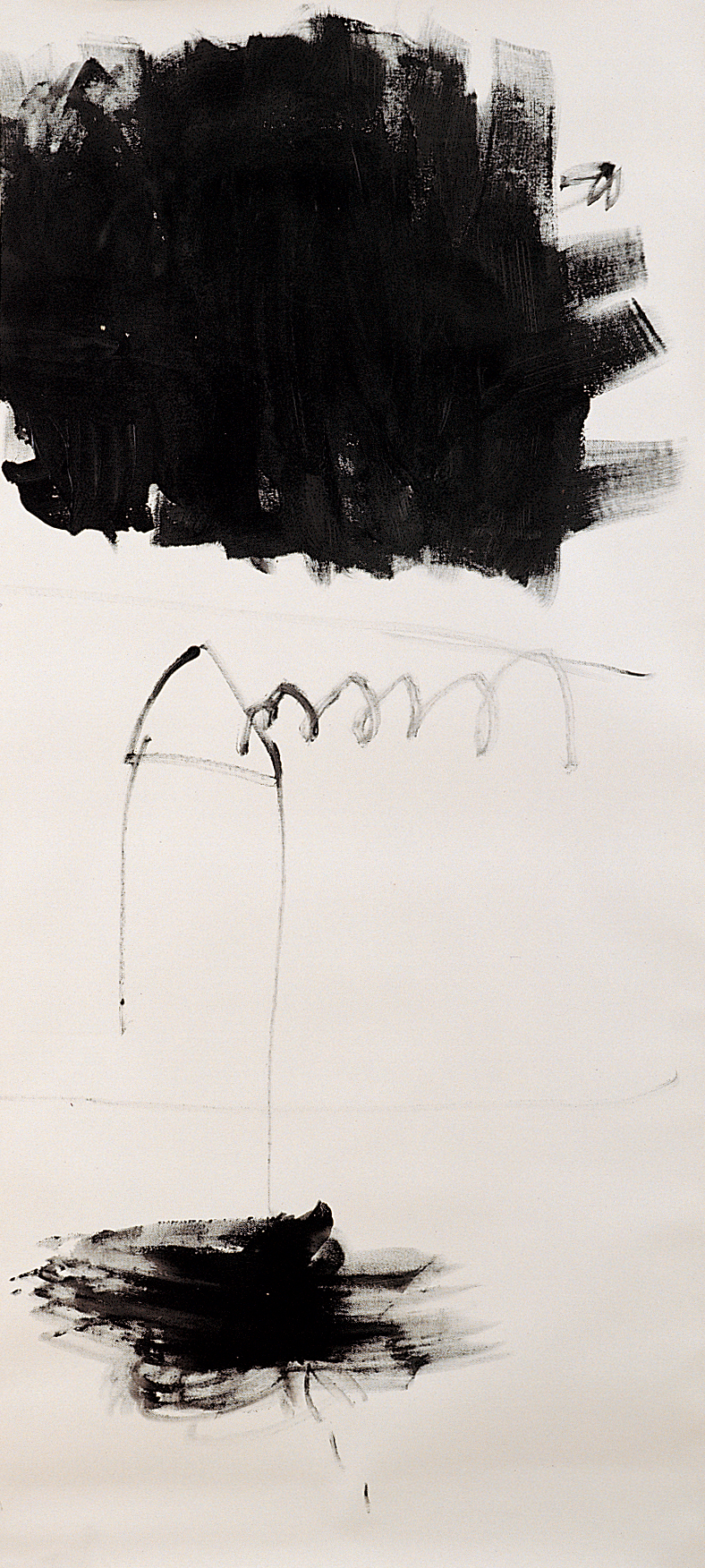
Floating House, 2005, acrylic on canvas, 158x72

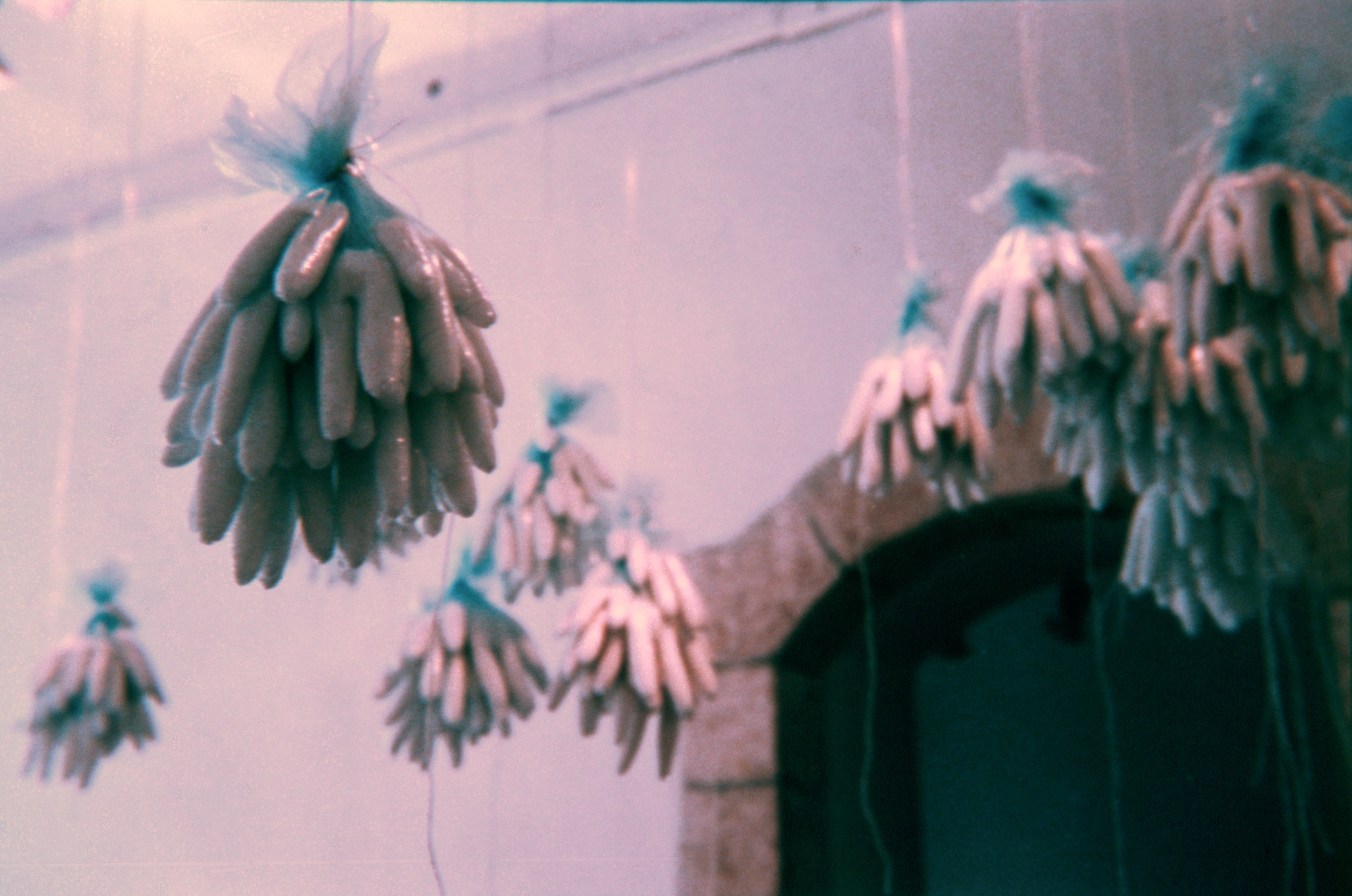
Part-time Witch, 1998, Artist’s House, Jerusalem, Ceiling installation, Blue nylon gloves, coarse salt and linen thread